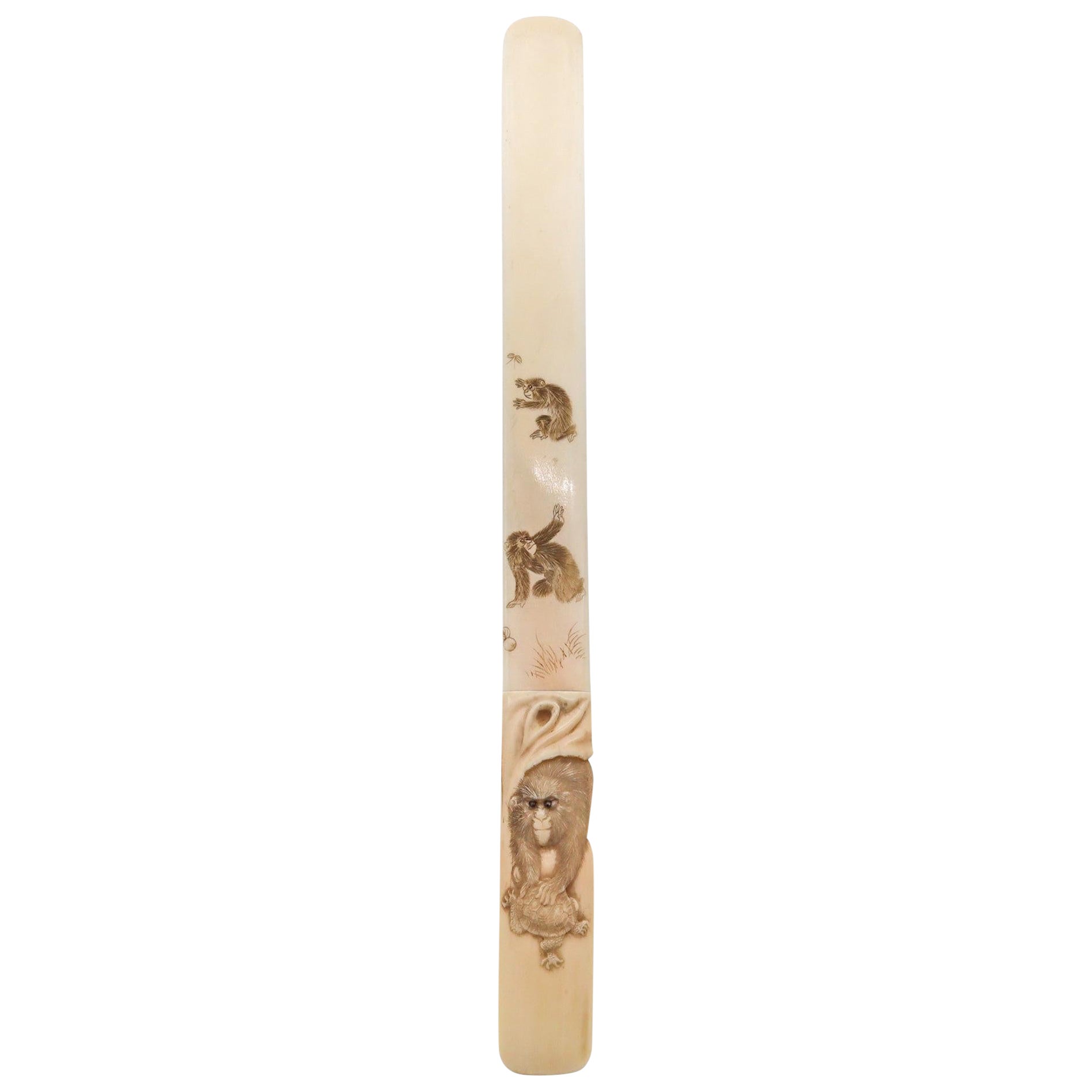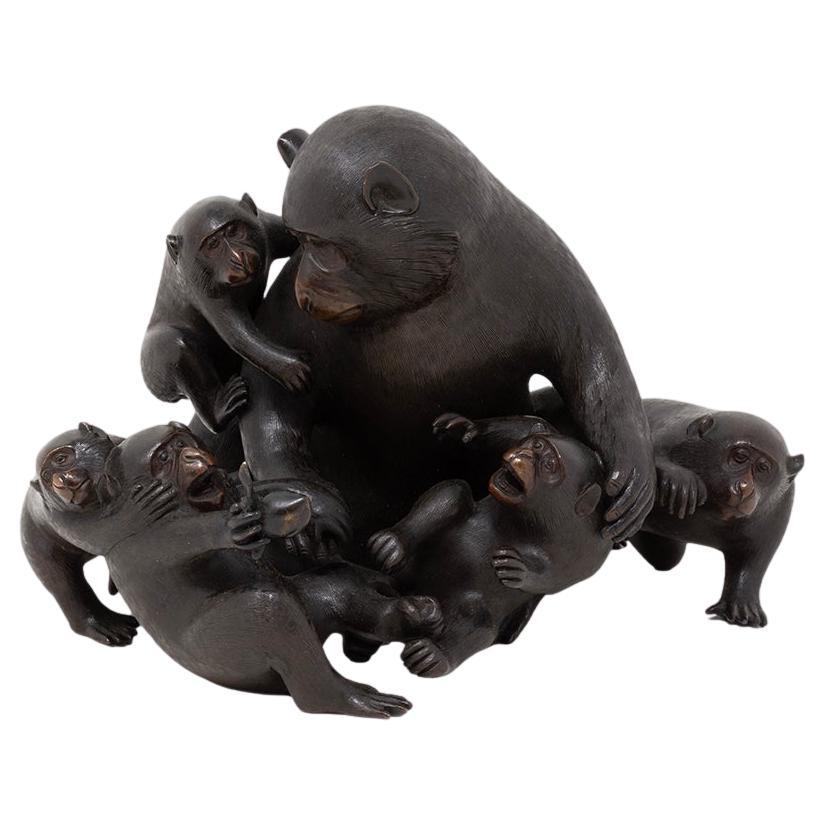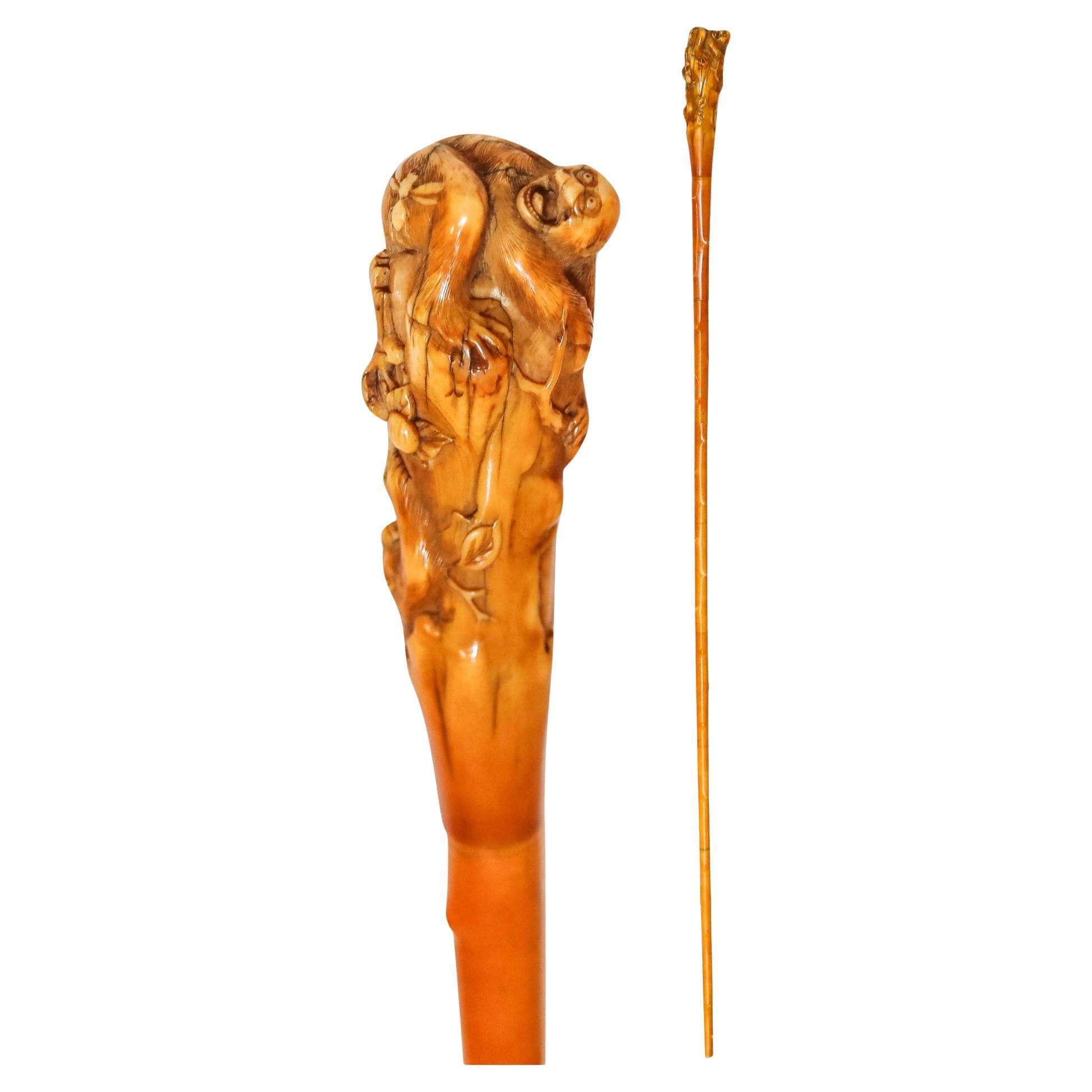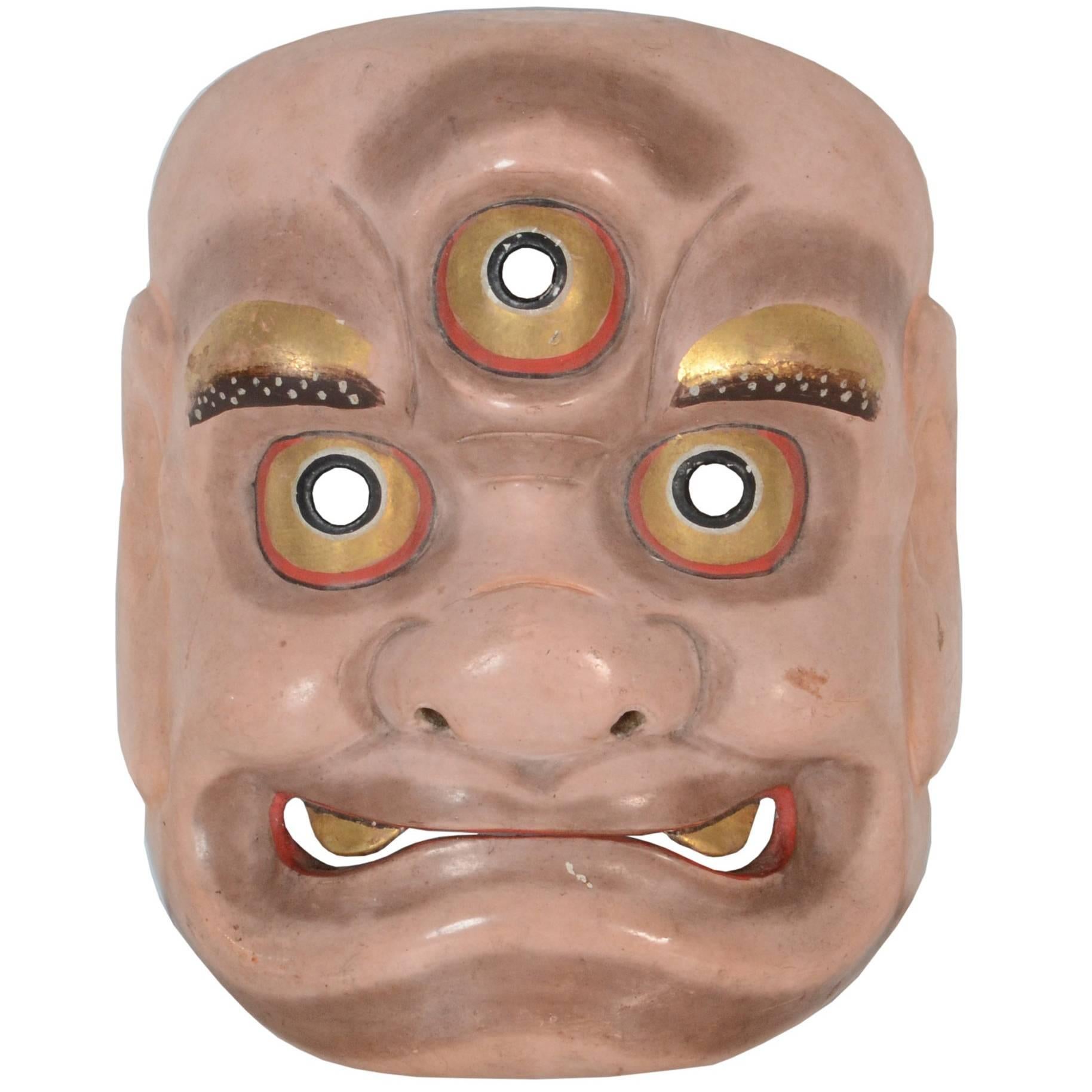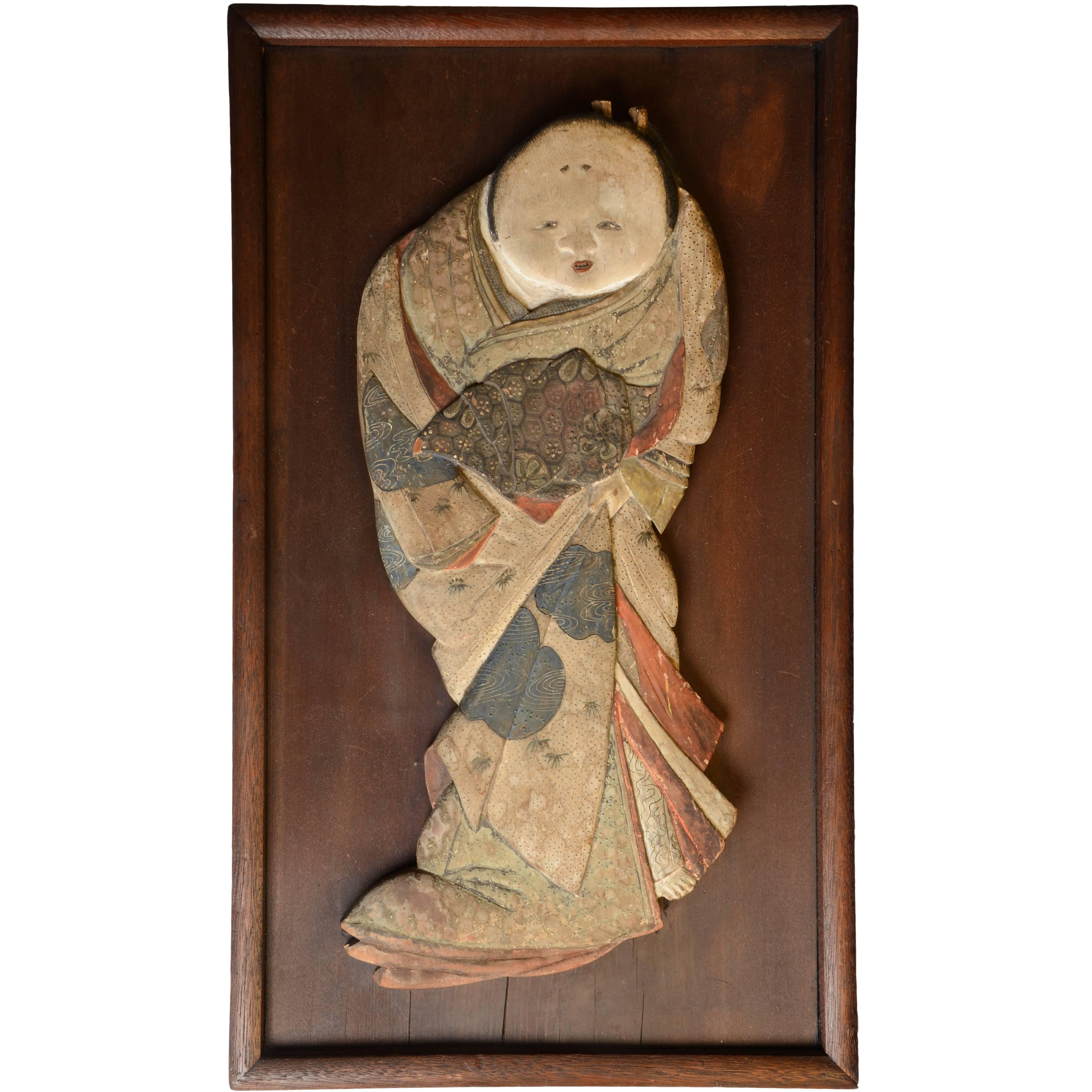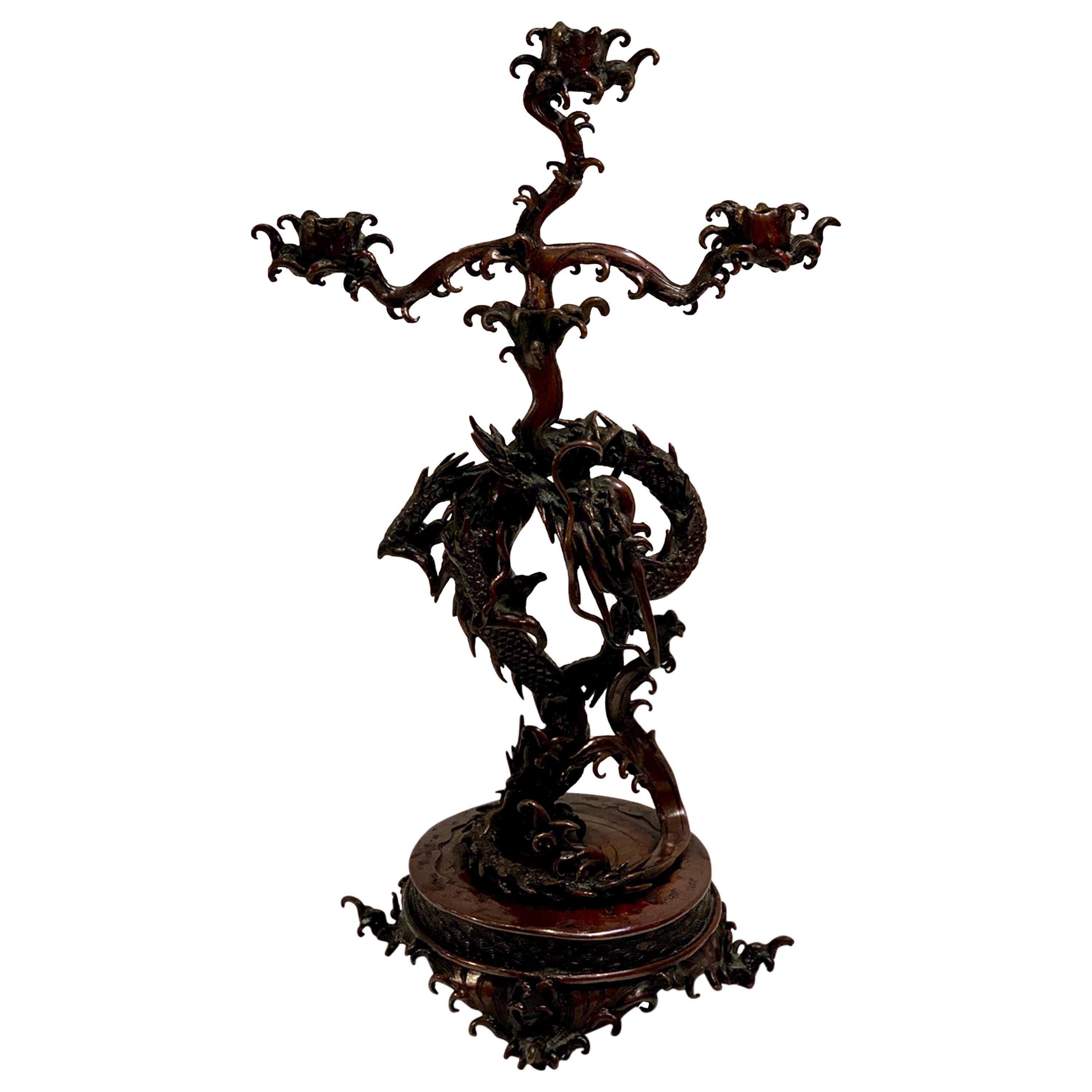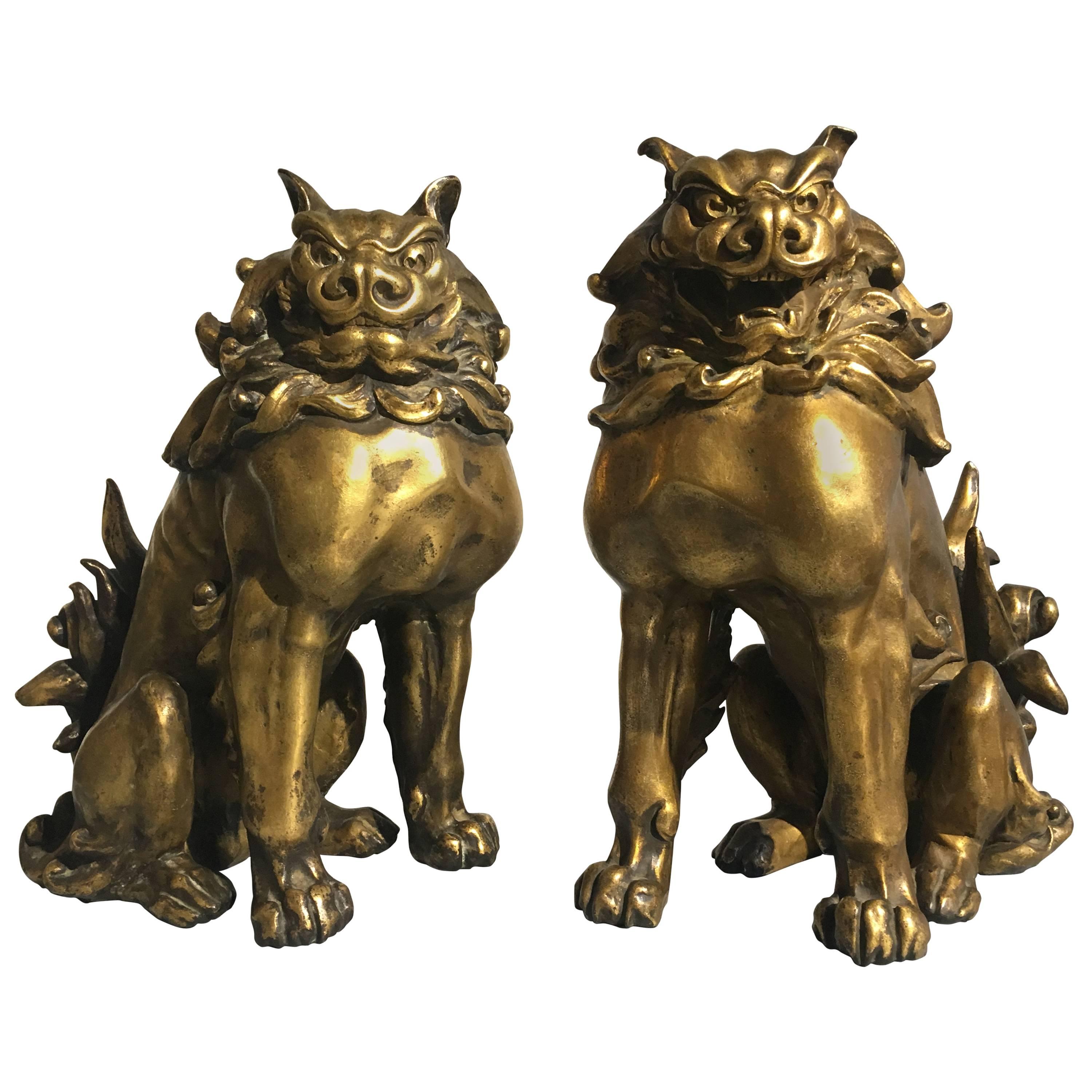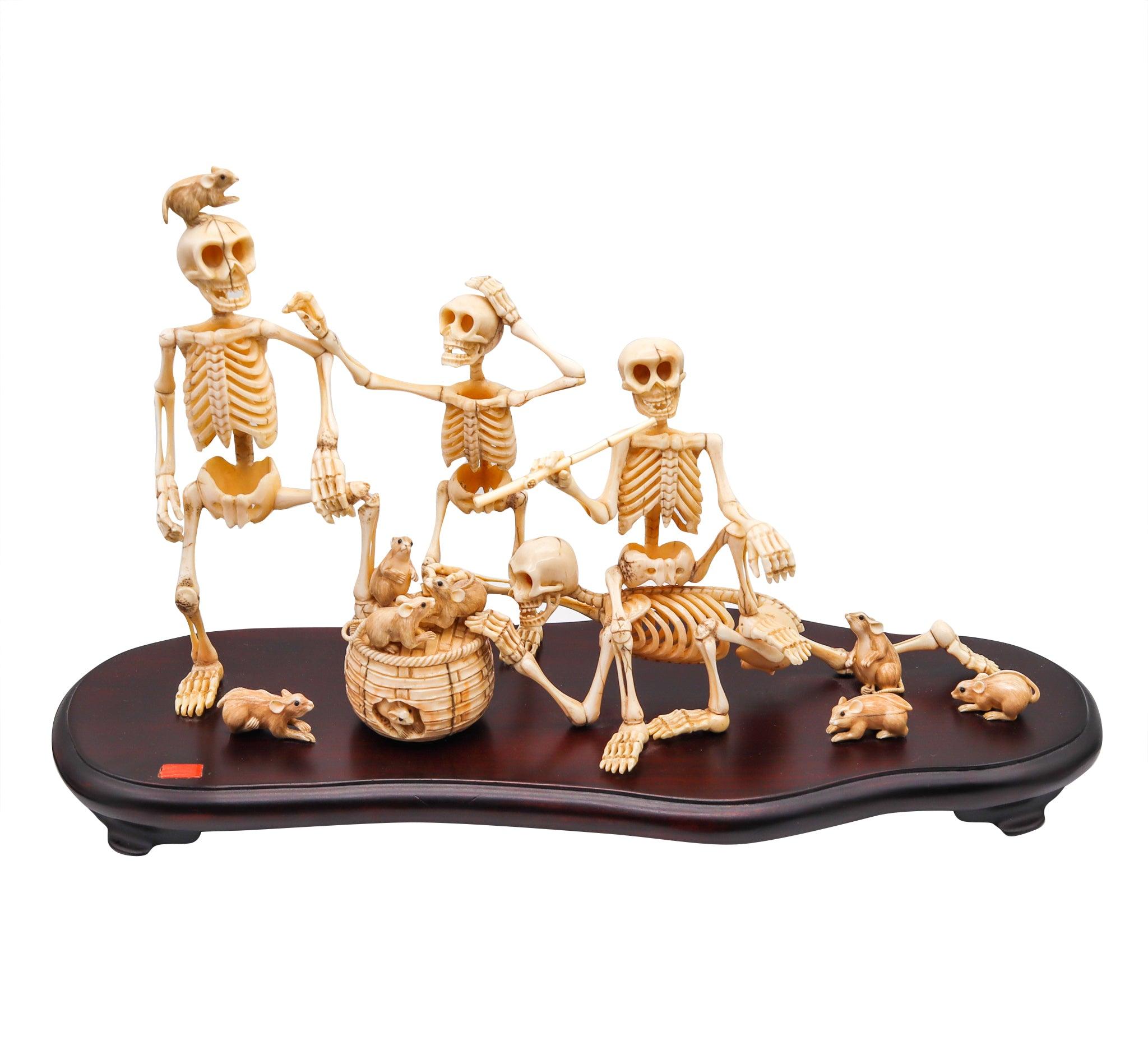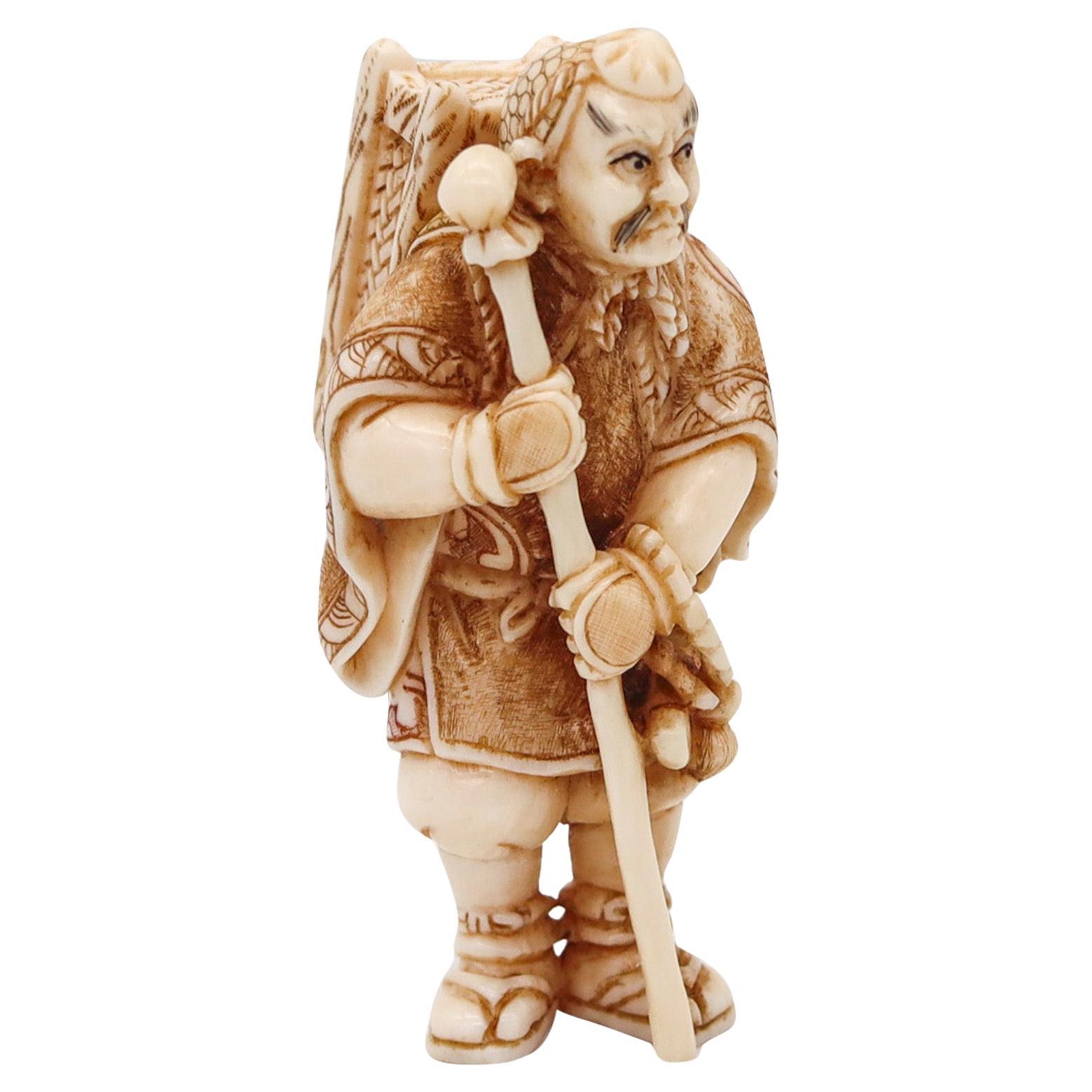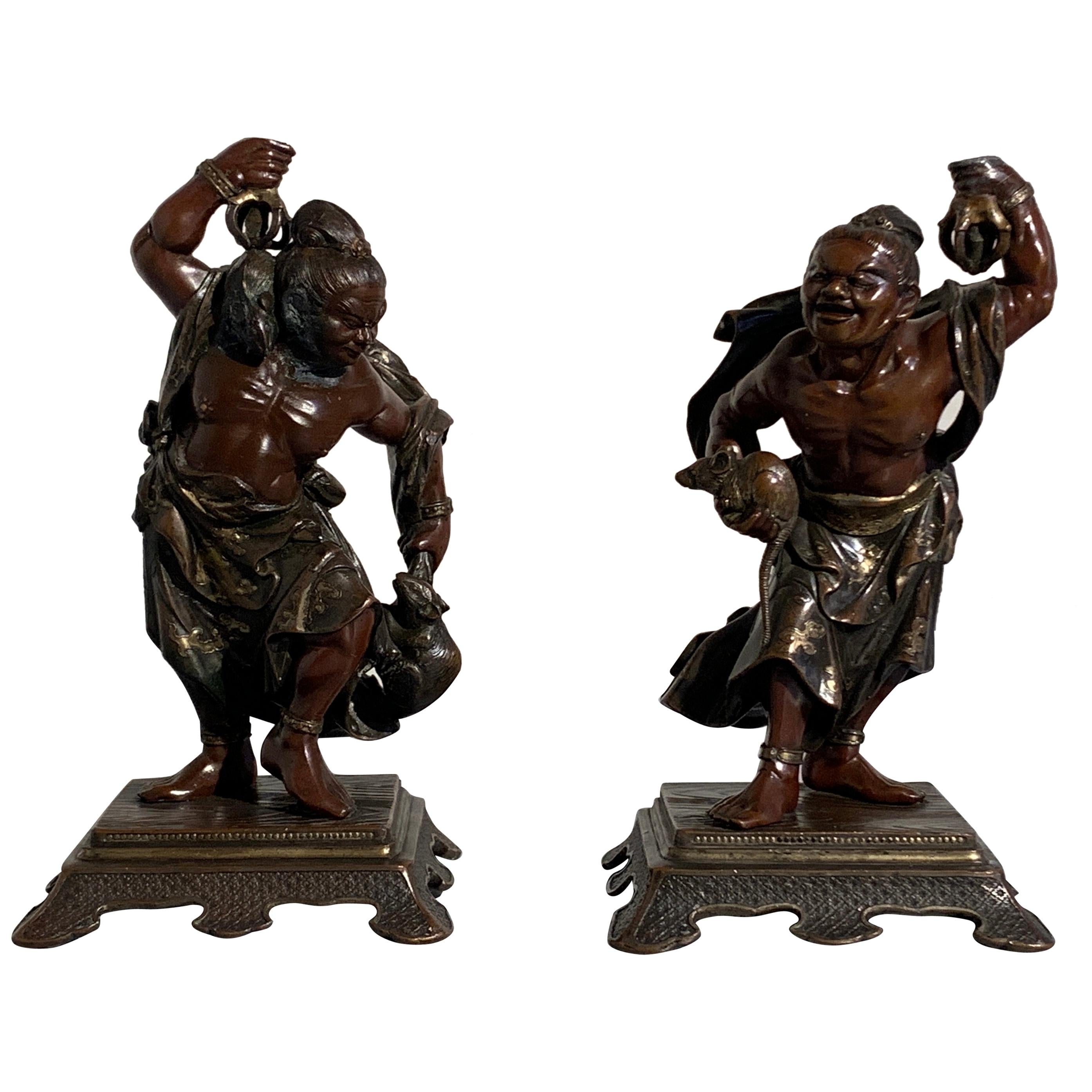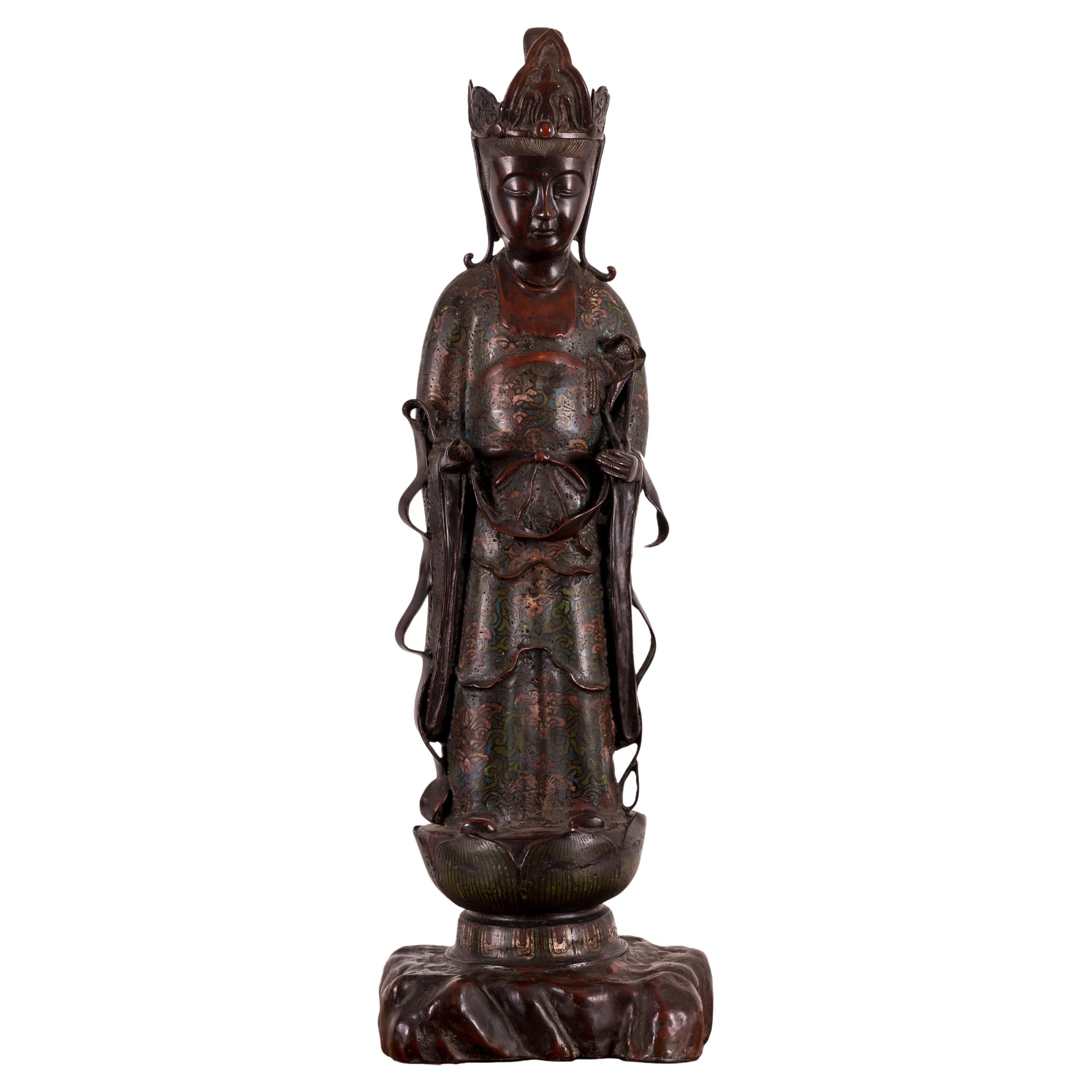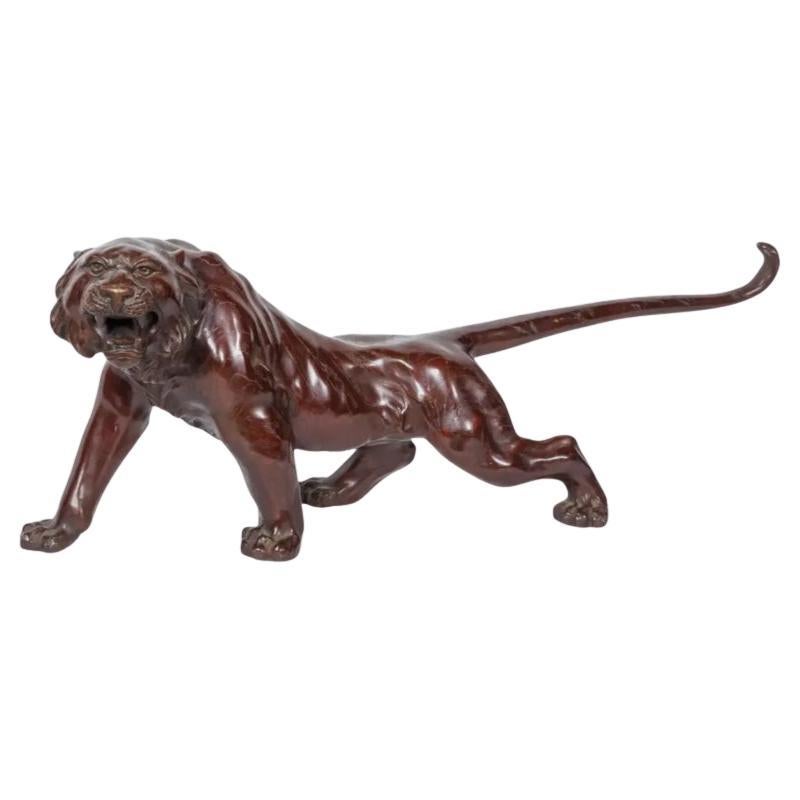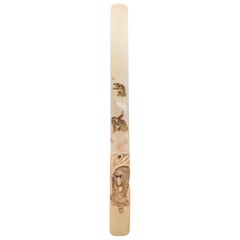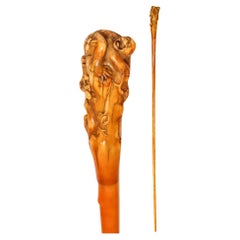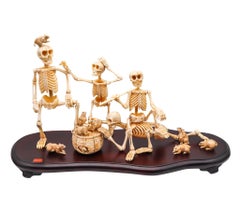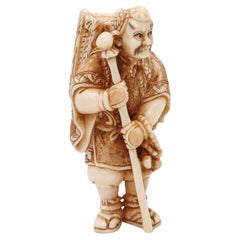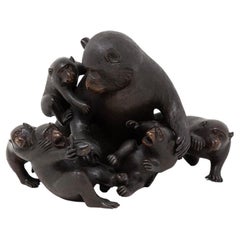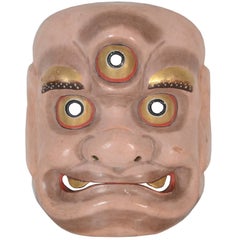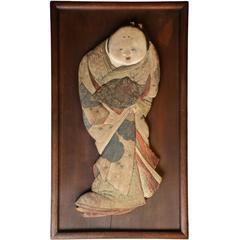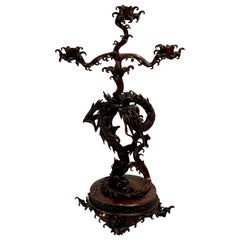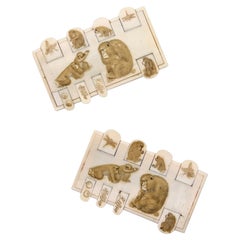
JAPAN 1900 Meiji Pair of Ivory Bezique Whist Game Counters With Monkeys
View Similar Items
Want more images or videos?
Request additional images or videos from the seller
1 of 10
JAPAN 1900 Meiji Pair of Ivory Bezique Whist Game Counters With Monkeys
About the Item
- Dimensions:Height: 2.28 in (5.8 cm)Width: 3.65 in (9.28 cm)Depth: 0.4 in (1.02 cm)
- Sold As:Set of 2
- Style:Meiji (Of the Period)
- Materials and Techniques:
- Place of Origin:
- Period:1900-1909
- Date of Manufacture:1900
- Condition:Wear consistent with age and use. The overall condition of this pair is excellent. Beside the little normal wear, there is no damage and all parts are secured in the settings. This piece has been carefully inspected to guarantee the condition and authenticity.
- Seller Location:Miami, FL
- Reference Number:Seller: D070324MENG/.98341stDibs: LU8303240694542
About the Seller
5.0
Platinum Seller
Premium sellers with a 4.7+ rating and 24-hour response times
1stDibs seller since 2023
194 sales on 1stDibs
Authenticity Guarantee
In the unlikely event there’s an issue with an item’s authenticity, contact us within 1 year for a full refund. DetailsMoney-Back Guarantee
If your item is not as described, is damaged in transit, or does not arrive, contact us within 7 days for a full refund. Details24-Hour Cancellation
You have a 24-hour grace period in which to reconsider your purchase, with no questions asked.Vetted Professional Sellers
Our world-class sellers must adhere to strict standards for service and quality, maintaining the integrity of our listings.Price-Match Guarantee
If you find that a seller listed the same item for a lower price elsewhere, we’ll match it.Trusted Global Delivery
Our best-in-class carrier network provides specialized shipping options worldwide, including custom delivery.More From This Seller
View AllJAPAN 1900 Meiji Carved Letter Opener With Sculpted Monkeys
Located in Miami, FL
Japanese Meiji period letter opener.
An exceptional letter opener, created during the imperial Japan in the Meiji period, back in he 1900. The letter opener has been carefully carve...
Category
Antique Early 1900s Japanese Meiji Sculptures and Carvings
Materials
Gold Leaf
JAPAN 1880 Meiji Highly Detailed Walking Cane With Monkeys In a Bamboo Forest
Located in Miami, FL
Waling cane from the Meiji Period (1868-1912).
This is a fabulous antique walking cane created in the imperial Japan during the Meiji period (1868-1912), circa 1880's. The cane was ...
Category
Antique 1880s Japanese Meiji Sculptures and Carvings
Materials
Wood
JAPAN 1890 Meiji Period Okimono Sculpture With A Group Of Skeletons Playing
Located in Miami, FL
A signed Okimono from the Japanese Meiji period (1868-1912).
Very rare, unusual and large sculptural assembling of a dysplaying piece of okimono. Created in Japan during the imperia...
Category
Antique 1890s Japanese Meiji Sculptures and Carvings
Materials
Wood, Lacquer
$13,989 Sale Price
30% Off
JAPAN 1890 Meiji Sculptural Polychromate Netsuke Of a Yamabushi
Located in Miami, FL
Japanese Meiji period netsuke. of a Yamabushi.
This is an exceedingly beautiful and intricate carved netsuke, created during the imperial Japan in the Meiji period, back in he 1890....
Category
Antique 1890s Japanese Meiji Sculptures and Carvings
Materials
Bone
$978 Sale Price
30% Off
JAPAN 1890 Meiji Carved Figure of Fortune God Daikoku As a Farmer With Coins
Located in Miami, FL
A Japanese carved sculpture of Daikoku.
Magnificent sculpture of the god of the fortune Daikoku WITH OVER 100 YEARS OLD, created in Japan during the Meiji period, circa 1890. The ca...
Category
Antique 1890s Japanese Meiji Sculptures and Carvings
Materials
Gold
$3,489 Sale Price
30% Off
JAPAN 1890 Meiji Period Okimono Sculpture Of A Group Of Skeletons Smoking
Located in Miami, FL
Sculptural signed Okimono from the Japanese Meiji period (1868-1912).
Very rare, unusual and large sculptural assembling of a dysplaying piece of okimono. Created in Japan during the imperial period of the Meiji (1868-1912). This extraordinary okimono was carefully carved depicting a group of three intricately and realistically rendered carousing skeletons (Gaikotsu) in relax and resting position, drinking and smoking. Two of them, probably males representations are resting on a wicker sofa. The third, is a woman seated in a lower stool...
Category
Antique 1890s Japanese Meiji Sculptures and Carvings
Materials
Wood, Lacquer
$13,989 Sale Price
30% Off
You May Also Like
Japanese Meiji Period Bronze Monkey Group Sculpture Okimono Shosai
Located in Newark, England
Featuring Seven Japanese Macaques
Form our Japanese collection, we are delighted to offer this Japanese Bronze Monkey Group by Shosai. The Japanese Bronze Group displaying a male father monkey and his infants playing around and being mischievous with Persimmon fruit. The monkeys modelled as Japanese macaque monkeys (snow monkey). The bronze okimono is beautifully patinated with a highly lifelike and naturalistic casting signed to the underside Shosai 正齊鋳. The Bronze group dates to the Meiji Period (1868-1912) circa 1885.
Japanese macaque (snow monkey) is a terrestrial Old World monkey species that is native to Japan. They are known as snow monkeys because some live in areas where snow covers the ground for long periods each year hence their nickname. No other non-human primate lives further north or in a colder climate than the snow monkey. Individuals have brownish grey fur, pinkish-red faces, and short tails. Two subspecies are known and their conservation Status is of least concern. In Japan, the species is known as Nihonzaru ニホンザル, 日本 (Japan/Nihon) and saru 猿 (monkey) to distinguish it from other primates, but the Japanese macaque is the only species of monkey in Japan.
The Japanese macaque features heavily in the religion, folklore, and art of Japan, as well as in proverbs and idiomatic expressions in the Japanese language. They are often seen in paintings, block prints and represented in all manner of carvings from Okimono to netsuke. Many of these art forms reside in the world’s most famous museums and collections, some of the most prominent pieces by artists such as Mori Sosen and Kawanabe Kyosai. In Shinto belief (Japan’s indigenous religion/nature religion) legendary mythical beasts known as raiju sometimes appeared as monkeys and kept Raijin (the god of lightning/storms) company. In another well known tale the three wise monkeys who warn people to “see no evil, hear no evil and speak no evil” can be seen depicted in relief over the door of the famous Tosho-gu shrine in Nikko.
Meiji Period was an era of Japanese history that spanned from 1868 to 1912. It was the first half of the Empire of Japan, when the Japanese people began to build a paradigm of a modern, industrialised nation state and emergent great power, influenced by Western countries and aesthetics. As a result of radically different ideas, the changes to Japan were profound and it affected the social structure, politics, economy, military, and foreign relations across the board. The period corresponded to the reign of Emperor Meiji and was preceded by the Keio era and was succeeded by the Taisho era.
Cultural Art during the Meiji Period was of particular interest to the government and they overhauled the art export market which in turn promoted Japanese arts via various world’s fairs, beginning in Vienna at the world fair in 1873. The government heavily funded the fairs and took an active role organising how Japan’s culture was presented to the world including creating a semi-public company named Kiritsu Kosho Kaisha (First Industrial Manufacturing Company). The Kiritsu Kosho Kaisha was used to promote and commercialise exports of Japanese art and established the Hakurankai Jimukyoku (Exhibition Bureau) to maintain quality standards. For the 1876 Centennial International Exhibition in Philadelphia, the Japanese government created a Centennial Office and sent a special envoy to secure space for the 30,000 items that would be displayed. The Imperial Household also took an active interest in arts and crafts, commissioning works by select artists to be given as gifts for foreign dignitaries further emphasising the high quality and importance of Japanese art. Just before the end of the 19th century in 1890, the Teishitsu Gigeiin (Artist to the Imperial Household) system was created to recognise distinguished artists. These artists were selected for their exceptionally high quality wares and talent in their own industry. Over a period of 54 years Seventy artists were appointed, amongst these were ceramicist Makuzu Kozan and cloisonné enamel artist...
Category
Antique Late 19th Century Japanese Meiji Sculptures and Carvings
Materials
Bronze
Japanese Theatre Mitsumekozo Theatre Mask Meiji Period, circa 1900
Located in Prahran, Victoria
Unusual Japanese Folk Art theatre mask depicting the playful character Mitsumekozo, a three eyed goblin often portrayed as a mischevious creature in comical plays, late Meiji period,...
Category
Antique Late 19th Century Japanese Meiji Sculptures and Carvings
Materials
Wood
$760 Sale Price
20% Off
Japanese Erotic Otofuku Folk Art Carving, Late Meiji Period, circa 1900
Located in Prahran, Victoria
Rare and highly unusual Japanese Folk Art wood carving depicting the folk heroine and good luck figure Otafuku with a finely painted erotic design on the interior and a carved inscri...
Category
Early 20th Century Japanese Meiji Sculptures and Carvings
Materials
Cypress
Meiji Era circa 1900 Antique Japanese Bronze Sea Dragon 3-Arm Candelabra
Located in Tustin, CA
Magnificent and powerful, fantastically sculptural, ferocious bronze Japanese writhing sea dragon candleholder is coiled around itself, with an uplifted head and a stylized plume of ...
Category
Antique Late 19th Century Japanese Meiji Antiquities
Materials
Bronze
Pair of Japanese Gilt Bronze Komainu by Ishikawa Komei, Meiji Period
Located in Austin, TX
A striking pair of Japanese gilt bronze komainu by the renowned Japanese sculptor, Ishikawa Komei (1852-1913), Meiji period, Japan.
The pair well cast, and robustly modeled. They ar...
Category
Antique Late 19th Century Japanese Meiji Sculptures and Carvings
Materials
Bronze
Pair of Japanese Cast Bronze Figures of Niō, Meiji Period, Late 19th Century
Located in Austin, TX
A well cast pair of Japanese mixed metal okimono figures of Buddhist guardians, known as Nio or Dharmapala, protectors of Buddhist faith, Meiji Period, Japan.
The smiling bronze g...
Category
Antique Late 19th Century Japanese Meiji Sculptures and Carvings
Materials
Bronze
Recently Viewed
View AllMore Ways To Browse
Kyogen Mask
Lizard Carving
Monkey Ceramic Japanese
Old Pottery Dog
Reclining Buddha Statue
Toro Lantern
Vietnam Buddha
Antique Butsudan
Antique Chinese Jade Statues
Antique Chinese Opera Dolls
Antique Guan Yin
Antique Pig Ornaments
Bodhisattva Maitreya
Buddha Mask
Carved Jade Bonsai Tree
Carved Lohan
Chinese Carved Bone Figure
Dayak Carving
